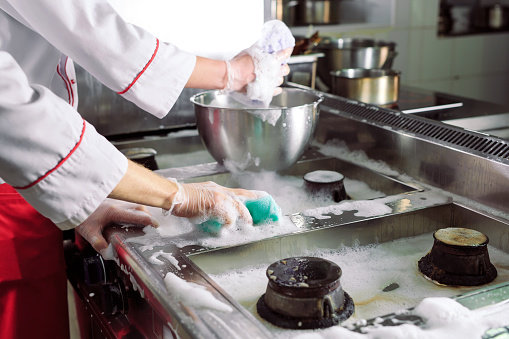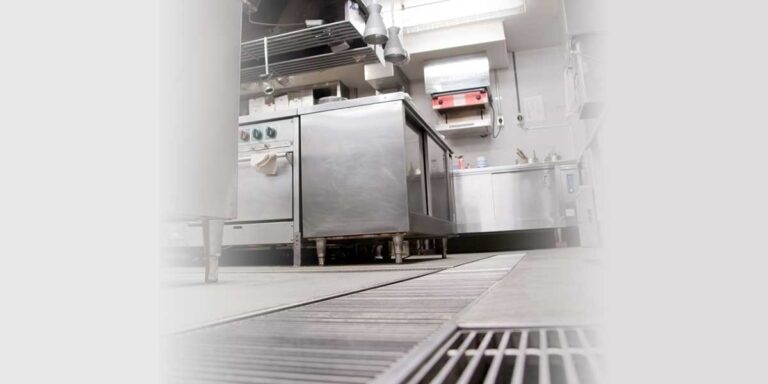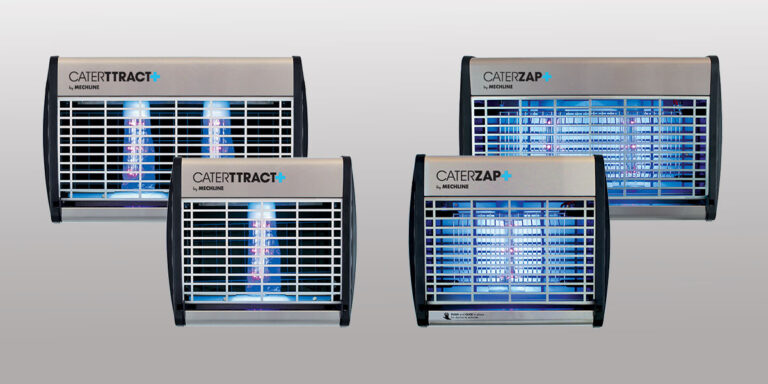Managing the fats, oils, grease and starches (FOGS) produced by your commercial kitchen requires some investigation. For example, are all grease removal solutions the same? Which one is best for your particular setup? How easy and cost-effective will it be to maintain? Perhaps your premises has inherited a FOGS management system, and you’re looking for ways to optimise it?
Grease traps vs automated grease removal units vs drain dosing systems – how can you make the right decision between these well-established contenders?
When doing your research, you’ll find that there are marked differences between the available solutions on the market. It can be pricey to install and maintain these systems, and if they malfunction or perform suboptimally, you could be making some excessively slimy contributions to your local sewerage system.
To help you wade through the ambiguity of the different grease management solutions, we talk about the most popular options in this article and break down the differences.
Grease traps
Grease traps are the veterans of fats, oils and grease (FOG) management solutions; they’ve been around since Victorian times and work on the premise that oil and water do not mix.
Typically this device looks like a box installed under your sink or in the kitchen and is made from metal or even plastic. Wastewater enters the grease trap and slows the flow of water, prompting FOG to float to the top and solids to sink to the bottom, while wastewater remains in the middle. The accumulated FOG have to be skimmed off the top and collected by a waste management specialist.
The frequency with which they must be serviced is often a turn-off. It can be pretty disruptive to a busy kitchen, considering that someone has to enter your premises and regularly perform the task of removing the FOG. In addition, unmaintained grease traps can quickly become unhygienic FOG swamps that produce unpleasant odours and become great attractions for insects, rats and other unpopular guests –– so it’s best not to leave them unattended.
Key considerations:
- Installed on the kitchen floor near your sink, dishwasher, and other FOG generating equipment
- Can differ in size, but typically take up considerable space
- Require regular servicing – by specialists
- Efficiency can quickly be compromised due to maintenance (lack of) or detergents in your wastewater
- Rusting or damage to the plastic and make-up of your grease trap requires complete replacement
Automatic grease removal units
Automatic grease removal units (automatic GRUs, or AGRUs) have the same function as passive grease traps in that both manage fatty oils and prevent them from entering sewer systems. They too slow the flow of wastewater and let it cool, to allow the elements to naturally isolate and separate – solids sink, water remains in the middle and FOG float. It is how each of these elements is dealt with once they have been isolated that differentiates between a passive and grease removal unit. Automatic GRUs will skim/remove FOG on a predetermined schedule, collecting them in a dedicated container, which can be emptied and stored for recycling.
Typically, an Automatic GRU unit is made of stainless steel. Depending on design, some AGRUs have a heating element, to liquefy FOG before removal. It can be smaller than a grease trap as it is ‘emptied’ daily – albeit into another container, which will need to be dealt with! This FOG waste must be stored safely and hygienically until collection.
Key considerations:
- Scheduled skimming and/or reheating for continuous FOG removal
- Grease is collected in a container and is easily accessed for emptying
- Requires daily attention from kitchen staff
- Installed on the floor – typically with a smaller footprint than grease traps
- Accumulated grease in large enough quantities could potentially be sold for biofuel
Drain dosing system
Drain dosing systems offer an ingenious solution to the FOG problem: it treats the wastewater before it leaves the building so that the debris are broken down and degraded into simpler compounds, so they do not build up in drains.
Traditionally, these systems required large drums filled with harsh chemicals, but today’s drain dosing systems are often discreet and extremely eco-friendly. Biological dosing, or bacterial dosing, can come in powder or fluid form, and uses bacteria to effectively metabolise the fats, oils, grease and starch (FOGS) particles from your commercial kitchen. Unlike enzyme dosing, which emulsify FOGS, the right bacteria can degrade FOGS into smaller, simpler molecules that cannot reform or solidify.
Drain dosing systems don’t have to be a stand-alone solution; they can complement your grease trap to not only prolong the life of these devices and extend the periods between maintenance checks, but further minimising the impact that your FOGS have on the local sewage system and the environment.
Mechline’s GreasePak is a wall-mounted system that uses a daily dose of powerful multi-strain solution to tackle your FOGS. It can be used as a standalone solution, with an existing grease trap or as part of the combined BioCeptor system.
Key considerations
- Can operate as part of a combined FOGS management system
- Works automatically (time-released bio-fluid) and requires minimal intervention or maintenance
- Prevents buildup of FOGS in your pipes and drains
- Easy and discreet installation
In the case of automated grease removal units vs grease traps vs drain dosing systems, it’s clear to see that there are obvious advantages and use-cases for each of these grease management solutions. Your decision will largely be influenced by the type of establishment you operate, the volume of FOGS you expel into the drain system and your ability to commit to the maintenance schedule required. A sandwich shop, for example, is unlikely to require a bulky grease trap. A big eatery with a high footfall and a particularly greasy menu is going to need a combined system to maximise the effectiveness of its FOGS management, however. Our team of experts can discuss the right solutions for you, or you can continue learning more about grease management solutions for commercial kitchens here.








